Top 15 AI Medical Scribe Companies Redefining Intelligent Clinical Documentation In 2026: Compare & Choose
2026 has become a defining year for AI-driven clinical documentation. After several cycles of improvement, AI medical scribes have matured into dependable, context-aware systems capable of supporting diverse specialties, reducing cognitive load, and improving the operational tempo of clinical teams.
What started as a convenience has now become a strategic advantage, particularly for practices that need accuracy, speed, and intelligent workflow support without compromising regulatory alignment or clinical nuance. Today’s leading AI scribes don’t simply produce notes; they reinforce clinical decision-making, enhance chart quality, and bring consistency to environments pressured by rising patient volume and increasing administrative requirements.A 2022 study published in the British Journal of Healthcare Management revealed that speech-recognition software reduced documentation time to 5.1 minutes compared to 8.9 minutes for manual entry. Additionally, the study found that AI-assisted documentation had fewer errors per line, 0.15 versus 0.3, demonstrating its potential to enhance accuracy.
Here’s how an AI medical scribe works:
- Audio Capture: The tool records spoken inputs from healthcare providers.
- Speech-to-Text Conversion: It transcribes the recorded audio into text.
- Contextual Analysis: It’s NLP algorithms analyze and interpret the content for accuracy and relevance.
- Summarization: The platform then generates a concise summary, highlighting key clinical details.
- EHR Integration: The finalized text is integrated into the EHR system after provider reviews and approval.
However, not all AI medical scribes are created equal. Some lack contextual understanding and customization capabilities, while others are still in early development and may not exhibit human-like intelligence. That’s why it’s crucial to evaluate the system thoroughly before incorporating them into your clinical workflows.
The following companies represent the expanded list of the most capable AI medical scribes in 2026, evaluated for their performance, adaptability, scalability, and real-world relevance to clinical operations.
Top 15 AI Medical Scribe
1. OmniMD AI Scribe
Best for practices wanting an all-in-one documentation + EHR + billing ecosystem.
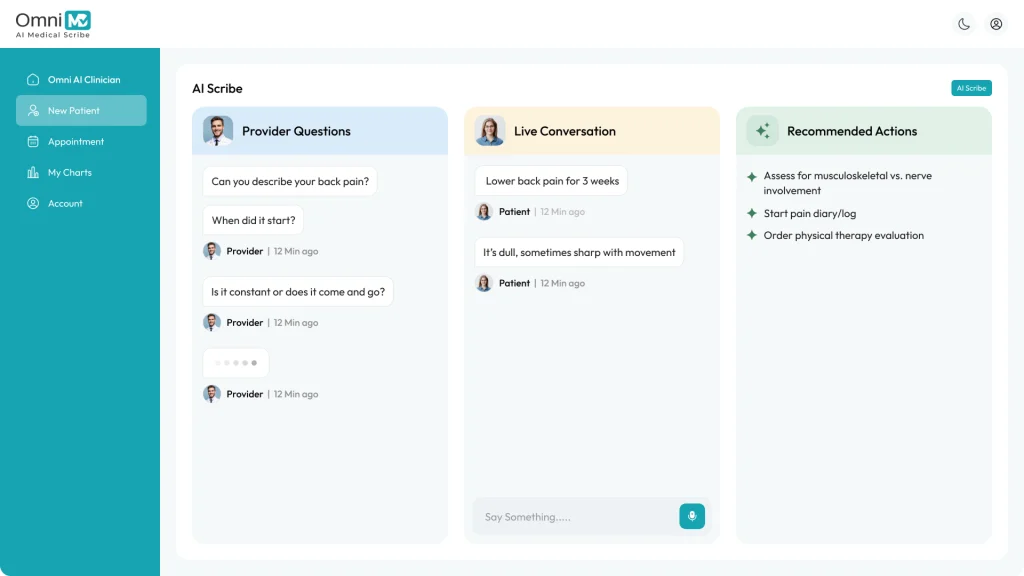
Positioning
A deeply integrated AI scribe built inside OmniMD’s EHR, Practice Management, and RCM platform.
Key Strengths:
- Structured notes mapped directly into the chart.
- Chart comparisons and clinical insight shortcuts.
- Multilingual ambient capture with speaker separation.
- Built-in alignment with scheduling, billing, and analytics.
Pricing
Custom, based on provider count and module selection.
Best For
Solo and multi-specialty clinics and growing practices wanting unified clinical operations.
Standout
The strongest native EHR integration among all AI scribes.
2. Sunoh.ai
Best for clinics wanting affordable, ambient-first documentation.
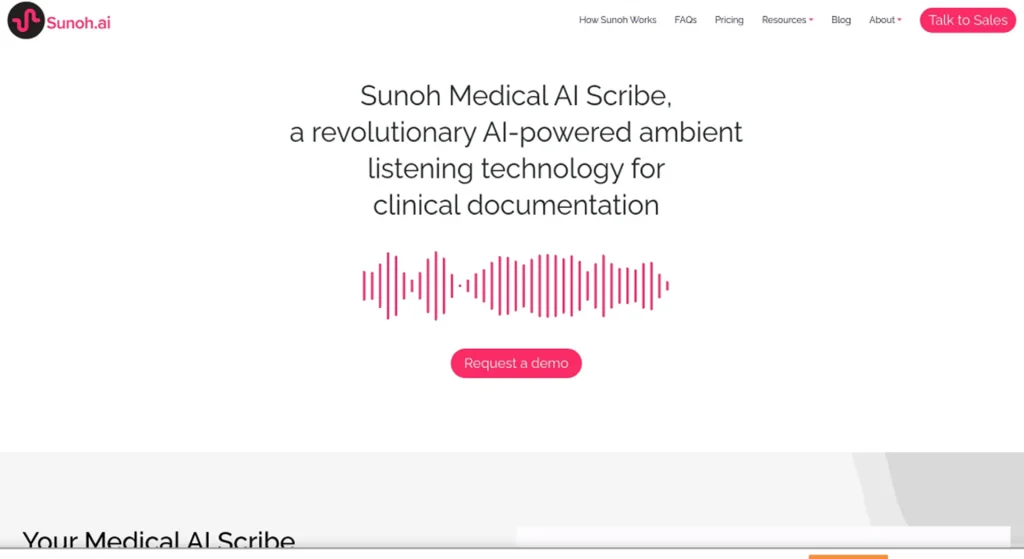
Positioning
A simple, budget-conscious ambient AI scribe for fast-paced outpatient settings.
Key Strengths:
- Passive ambient listening.
- SOAP-structured notes.
- Works across mobile, tablet, and desktop.
Pricing
Around $149 per user per month.
Best For
Urgent care, walk-in clinics, and high-volume outpatient workflows.
Standout
One of the most cost-effective ambient scribes.
3. Suki AI
Best for voice-first clinicians wanting coding support.
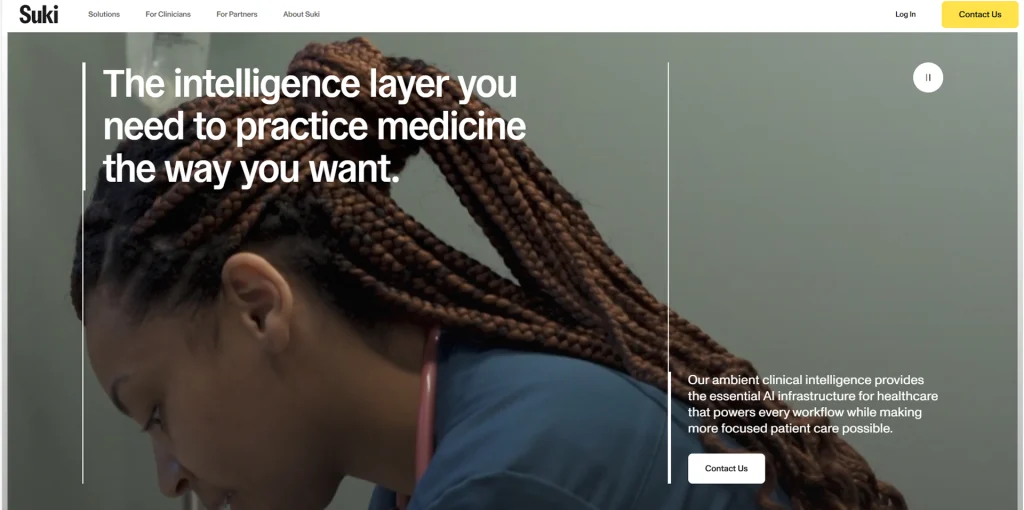
Positioning
A mature voice-driven AI assistant with reliable EHR connectivity.
Key Strengths:
- Real-time dictation and ambient documentation.
- ICD-10 and HCC guidance.
- Smooth integrations with major EHRs (Epic, Oracle, athenahealth, MEDITECH).
Pricing
Around $299 per provider per month.
Best For
Providers who prefer issuing voice commands for documentation.
Standout
The strongest voice-command workflow in its class.
4. Abridge
Best for enterprise systems seeking strong integration and high note quality.
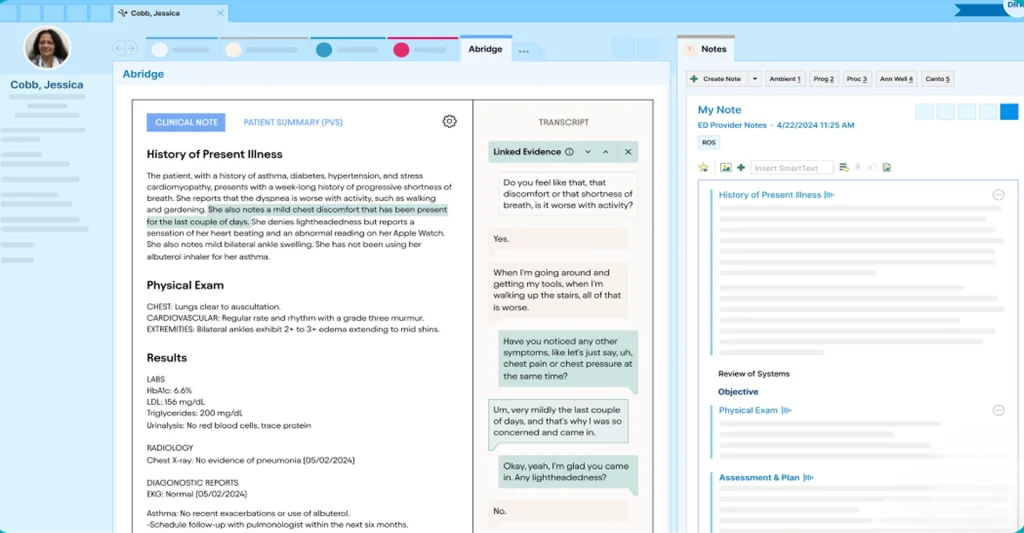
Positioning
A well-funded, widely adopted ambient scribe embraced by major health systems.
Key Strengths:
- Clean, structured clinical summaries.
- 50+ specialty support.
- Strong multilingual coverage.
- Proven reductions in clinician cognitive load.
Pricing
~$2,500 per user per year, typically for enterprise deployments.
Best For
Hospitals and large clinics requiring scalable ambient documentation.
Standout
One of the best structured summaries for complex visits.
5. Freed
Best affordable option for individuals and small clinics.
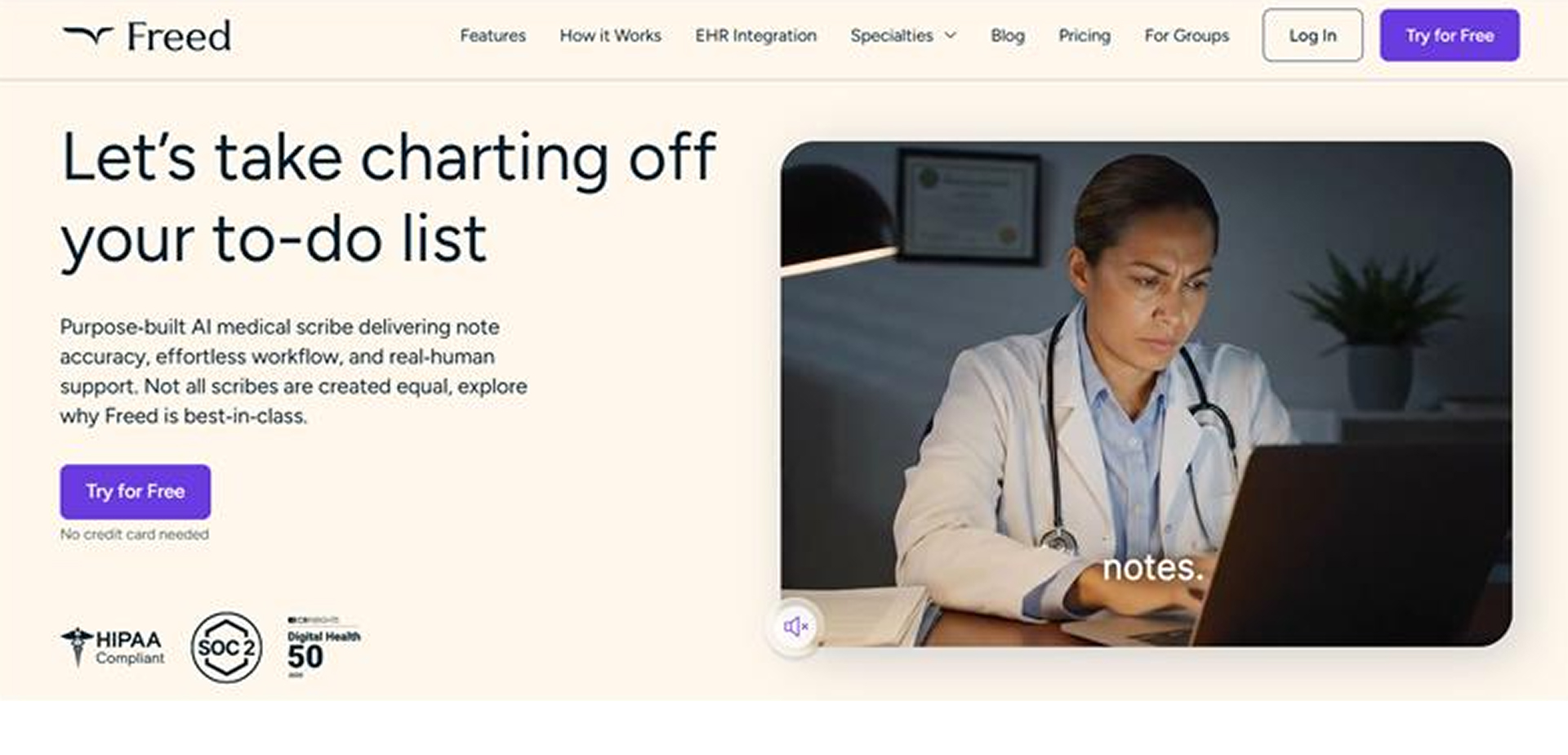
Positioning
A lightweight, easy-to-use AI scribe for smaller practices.
Key Strengths:
- Unlimited notes on paid plans.
- Extremely fast onboarding.
- Customizable writing style.
Pricing
$90 per provider per month.
Best For
Solo clinicians and small clinics adopting AI for the first time.
Standout
Strongest value for money in the entire category.
6. DeepScribe
Best for specialty-heavy or complex visit types.
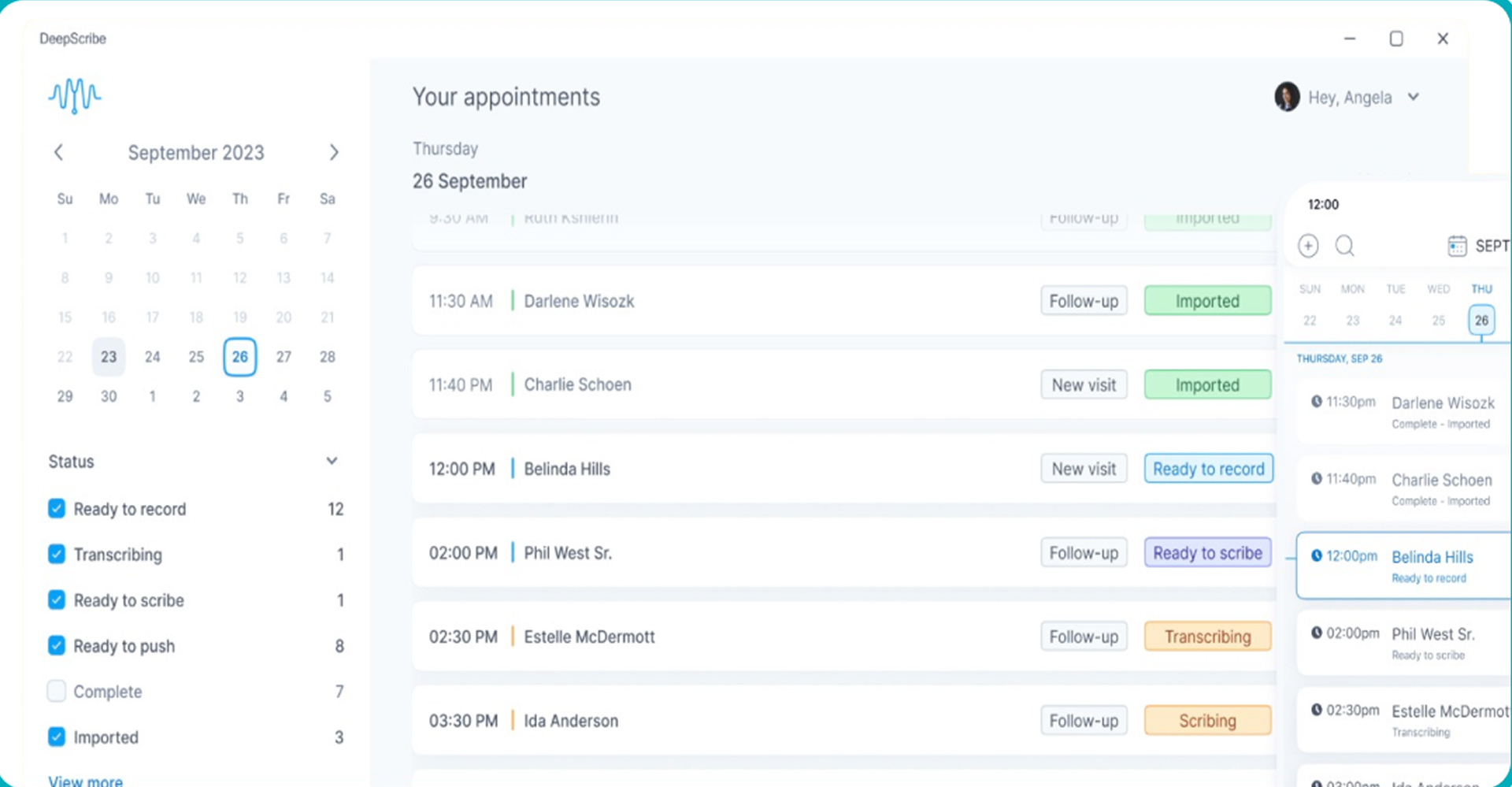
Positioning
A clinically deep ambient AI scribe known for strong specialty accuracy.
Key Strengths:
- Context-aware conversation interpretation.
- Strong templates for complex specialties.
- Coding-aligned structure.
Pricing
Approx. $750 per provider per month.
Best For
Oncology, cardiology, and other complex visit types.
Standout
Among the strongest for long, nuanced encounters.
7. DeepCura AI
Best for multi-specialty clinics wanting strong features at competitive pricing.
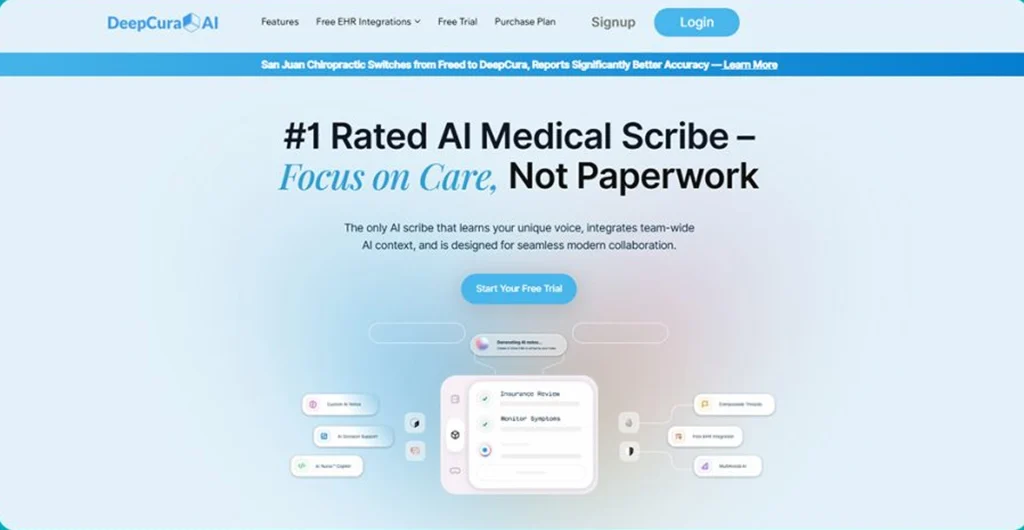
Positioning
A comprehensive ambient scribe with strong specialty support.
Key Strengths:
- Support for 50+ specialties.
- Multilingual recognition.
- Competitive pricing and bundled features.
Pricing
Starts at $129 per month.
Best For
Growing multi-specialty clinics.
Standout
High capability per dollar compared to competitors.
8. Augmedix
Best for enterprise groups needing accuracy with human QA support.
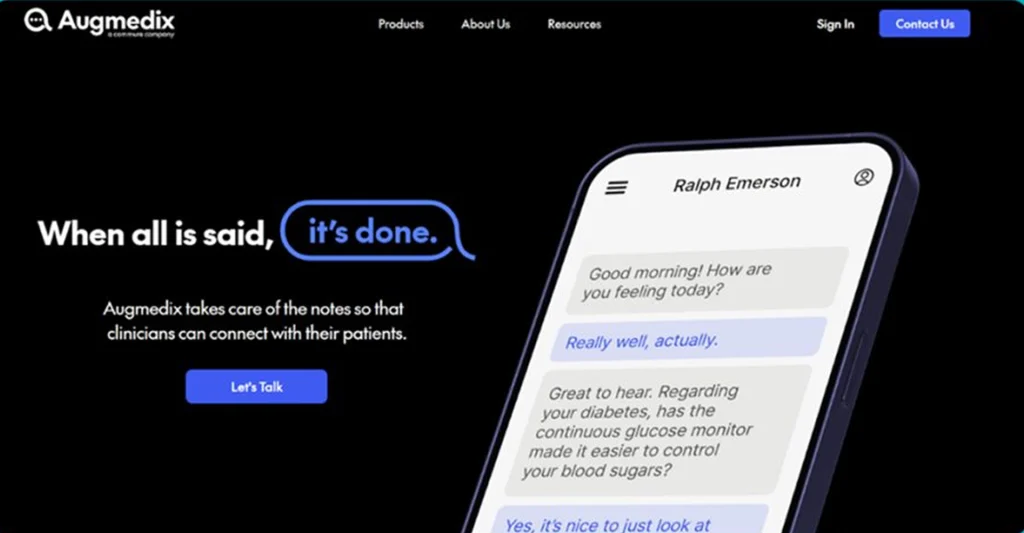
Positioning
A hybrid AI + human QA scribe platform trusted by large systems.
Key Strengths:
- QA-backed documentation.
- Wearable + mobile support.
- Strong enterprise-grade integrations.
Pricing
Enterprise contract–based.
Best For
Large practices and specialty groups with strict accuracy requirements.
Standout
Most reliable for accuracy-sensitive environments.
9. Tali AI
Best browser-based scribe for quick deployment.
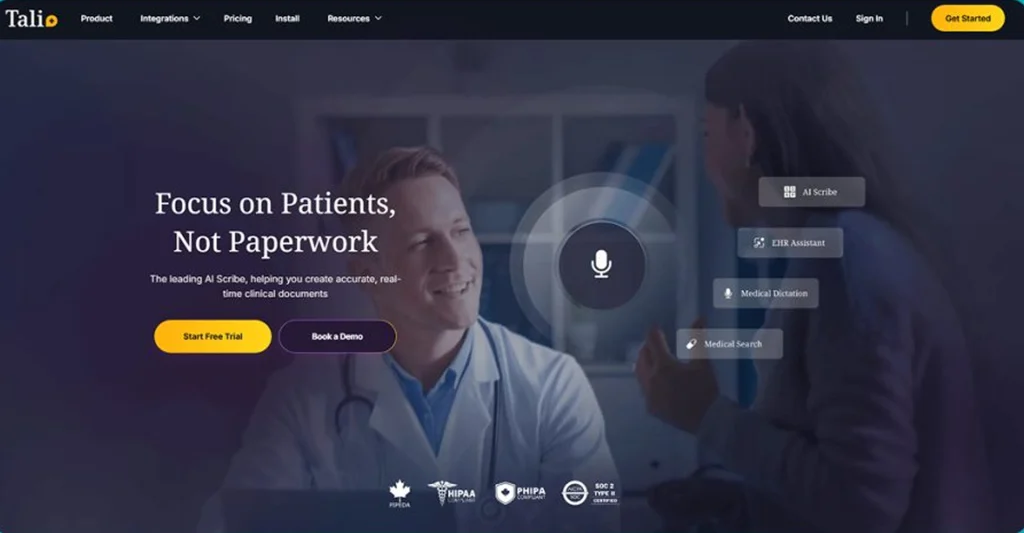
Positioning
A Chrome-based AI assistant combining dictation and scribing.
Key Strengths:
- Fast voice dictation.
- Ambient scribing mode.
- Easy-to-use browser extension.
Pricing
Free tier; premium plans $45–$135/month.
Best For
Small clinics wanting minimal setup.
Standout
Fastest adoption and lowest friction among lightweight tools.
10. Nabla Copilot
Best for hybrid-care clinics needing cross-device flexibility.
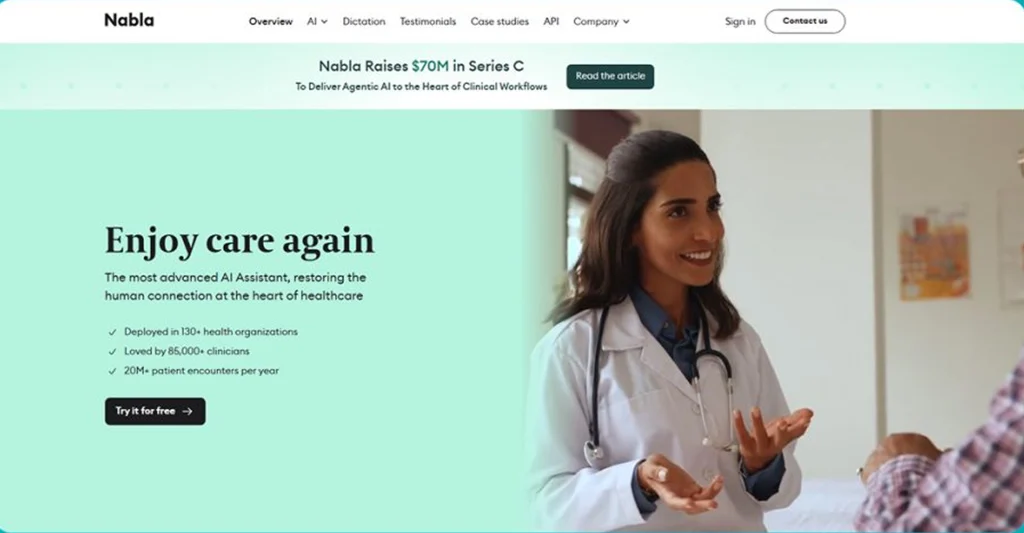
Positioning
A modern, minimal-interference ambient scribe.
Key Strengths:
- Multilingual listening.
- Smooth web/mobile performance.
- GDPR and HIPAA aligned.
Pricing
Around $119 per month.
Best For
Clinicians working across telehealth and in-person care.
Standout
Least disruptive user experience.
11. Notable Health
Best for clinics wanting automation beyond documentation.
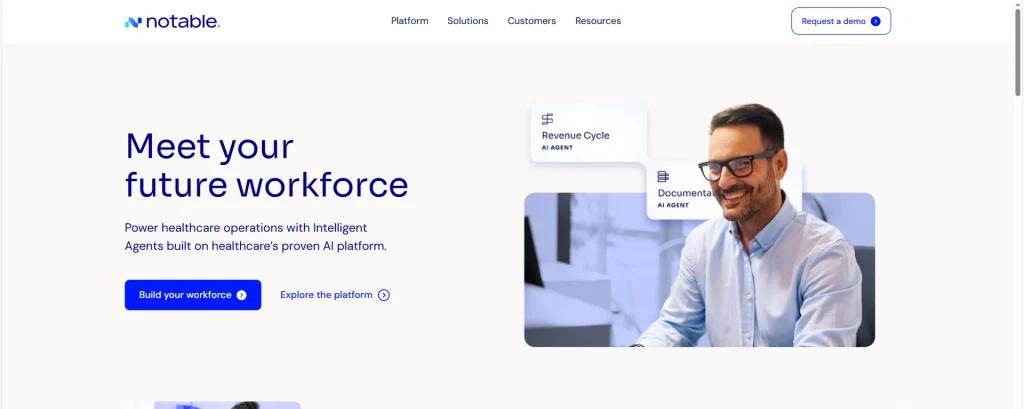
Positioning
A platform that combines scribing with workflow automation.
Key Strengths:
- Ambient scribing integrated with intake and scheduling automation.
- RCM workflow support.
- Strong analytics and operations tools.
Pricing
Enterprise-only.
Best For
Multi-location practices undergoing digital transformation.
Standout
Broader automation scope than any other tool on the list.
12. Nuance DAX Copilot (Microsoft)
Best for enterprise EHR alignment and compliance.
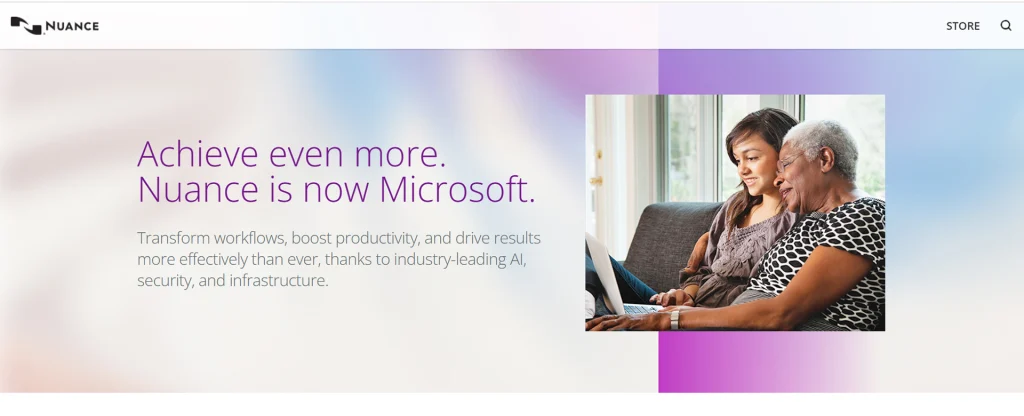
Positioning
A flagship ambient scribe tightly integrated into Microsoft’s healthcare stack.
Key Strengths:
- Deep EHR alignment (Epic, Cerner/Oracle, etc.).
- Strong compliance posture.
- Mature enterprise deployment model.
Pricing
Typically $444–$600 per provider per month plus setup fees.
Best For
Hospitals and enterprise-level clinical groups.
Standout
Strongest combination of compliance, enterprise governance, and speech technology.
13. AllyScribe
Best for chronic-care and longitudinal-care documentation.
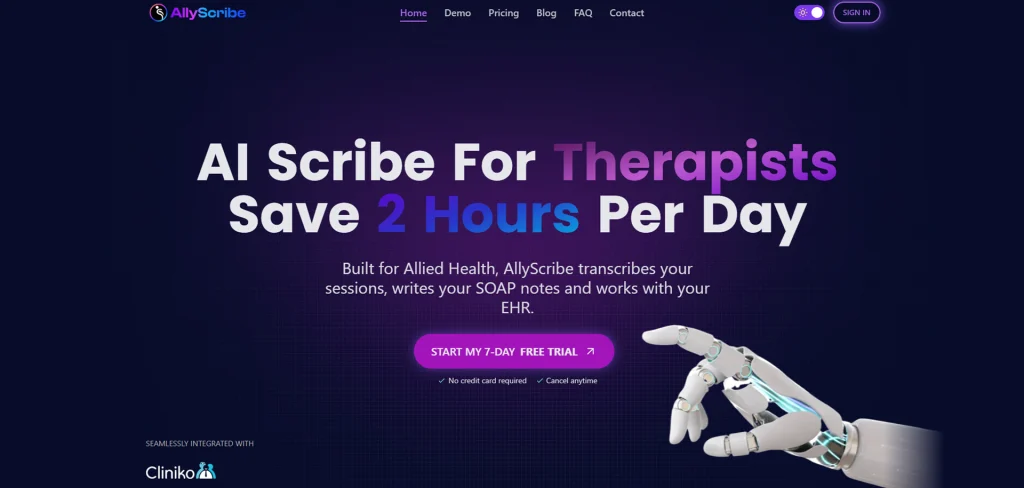
Positioning
A scribe designed to support long-term patient management.
Key Strengths
- Longitudinal note structure.
- Care plan alignment.
- Multi-condition context support.
Pricing
Mid-range, varies by program.
Best For
Functional medicine, autoimmune care, and chronic disease clinics.
Standout
Most suitable for multi-visit patient journeys.
14. Heidi Health
Best low-cost ambient scribe with rapid global adoption.

Positioning
A fast-growing, global AI scribe offering simple workflows and competitive pricing.
Key Strengths:
- Fast note generation.
- Free and premium tiers.
- User-friendly interface.
Pricing
Free plan available; premium around $70/month.
Best For
Small practices wanting quick documentation improvements.
Standout
Strong adoption curve with minimal onboarding time.
15. S10.AI
Best emerging scribe for small and mid-sized practices.
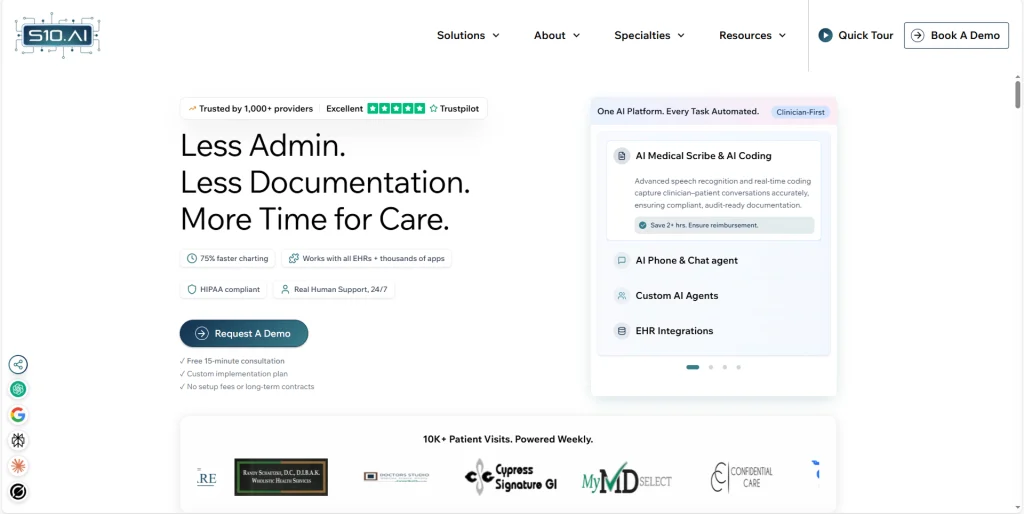
Positioning
A newer AI-native scribe gaining traction for its speed and simplicity.
Key Strengths:
- Quick draft generation.
- Specialty-aware templates.
- Simple onboarding process.
Pricing
Typically in the low-to-mid-tier range; varies by tier.
Best For
Clinics wanting modern AI features without enterprise pricing.
Standout
Strong emerging option with competitive feature-to-price ratio.
How to Choose the Right AI Medical Scribe (2026 Checklist)
Use this quick framework when comparing options.
Integration Depth
- If you want documentation tied to billing, scheduling, and charting: go for OmniMD, Abridge, Nuance DAX, or Augmedix
Voice-First Preferences
- If you prefer speaking commands: consider between Suki AI and Tali AI.
Specialty Complexity
- For oncology, cardiology, or long visits: OmniMD, DeepScribe, Abridge, or Augmedix can be a good fit.
Automation Beyond Notes
- For workflow automation + documentation: OmniMD and Notable Health are good.
Telehealth & Hybrid Care
- For cross-device, minimal-interference documentation: you can choose between Nabla Copilot and Heidi Health
Enterprise Requirements
- For hospitals and large systems: Nuance DAX, Augmedix, OmniMD or Abridge have good options.
Conclusion
AI medical scribes are no longer optional—they’re becoming foundational to modern healthcare operations. The right solution depends on your clinic’s size, specialty mix, workflow needs, and budget. Each of the companies in this list represents a strong, credible option for 2026. Use this comparative breakdown to identify the fit that aligns best with how your practice delivers care.
Disclaimer
The content provided in this article is for informational purposes only and does not constitute medical, legal, or financial advice. While every effort has been made to ensure the accuracy and reliability of the information presented, readers are advised to independently verify any claims, pricing, or features with the respective AI scribe vendors. The views expressed by the authors and reviewers are their own and do not imply endorsement of any specific product or company. All trademarks and brand names mentioned are the property of their respective owners.

Choose the best AI medical Scribe
Streamline Documentation, Reduce Burnout, Enhance Patient Care!
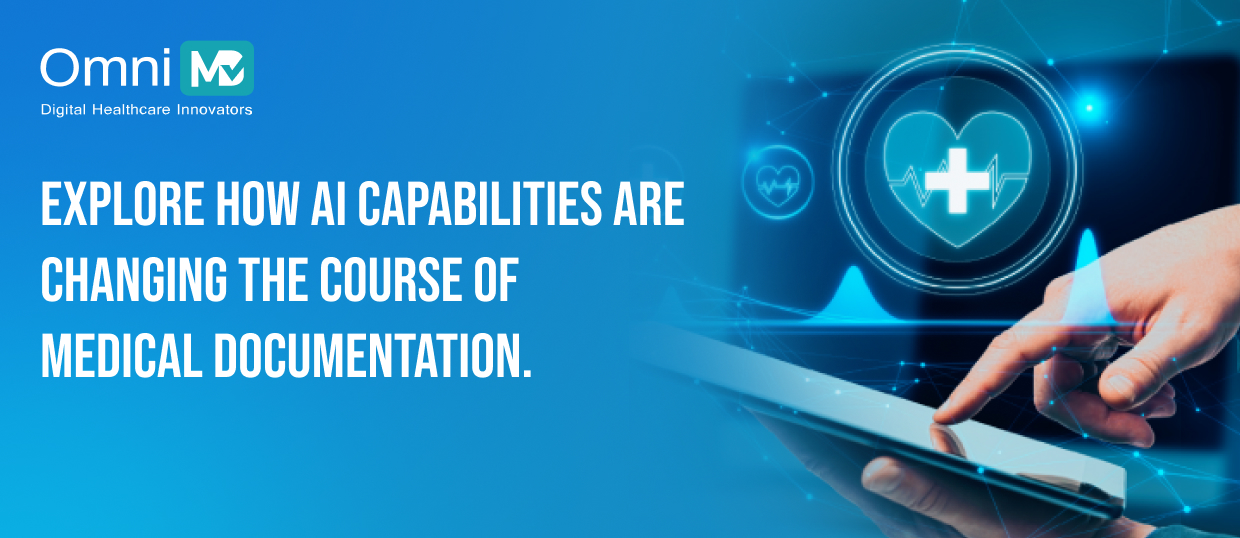
 Written by Dr. Giriraj Tosh Purohit
Written by Dr. Giriraj Tosh Purohit